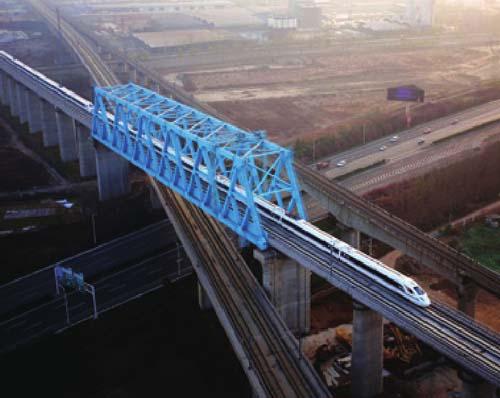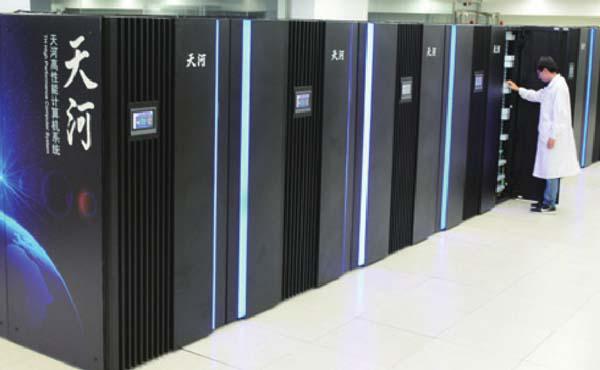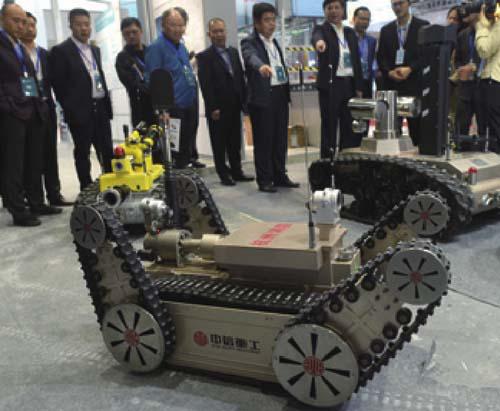HI-TECH EDGE
2018-01-15ByGeLijun
By Ge Lijun

The announcer on the giant screen greeted visitors to the Wuzhen International Internet Exhibition Center cheerfully. “Good morning, everyone! I will be your news anchor for today.” But this was no ordinary announcer; the voice and image were entirely generated by artificial intelligence (AI) technology.
The virtual announcer was one of the highlights of the Light of the Internet Expo on the sidelines of the Fifth World Internet Conference held in Wuzhen, east Chinas Zhejiang Province, on November 6-10. Every year during the exhibition, 5G technology, AI, cloud computing, big data, smart medical care and other scientific buzzwords materialize in a series of innovative products. Particularly, exhibits from Chinese tech companies have become increasingly eyecatching. Many of these tech-rich creations are bringing benefits to people worldwide aspiring for a better life.
Over the past four decades, science and technology have become the main productive forces in China, while innovation has become a major driver of development. This scientific and technological capacity has progressed hand in hand with economic development, which has greatly contributed to the improvement of Chinas composite strength.
Impressive progress
When China launched reform and opening up in 1978, most Chinese railways still used steam locomotives with an average speed of 40 km per hour. After years of hard work, the Beijing-Tianjin Intercity Railway, the first high-speed railway (HSR) in China with a speed of up to 350 km per hour, opened in 2008. In just 10 years, Chinas HSR network is operating the fastest trains in the world.
The Chinese rail network went from 52,000 km in 1978 to 127,000 km at the end of 2017, an increase of 144 percent. This includes 25,000 km of high-speed lines, accounting for 66.3 percent of the global total.
“Thanks to HSR, the trip from Beijing to my hometown has been reduced by six hours,” said Li Wenshui, a student in Beijing from east Chinas Shandong Province. In addition, the export of HSR technology to Southeast and Central Asian countries has become an important part of Chinese international cooperation, in what is called “railway diplomacy.”
These scientific and technological achievements stem from a common element: innovation. According to Wang Zhigang, Minister of Science and Technology, a high degree of integration between innovation and supply-side structural reform has facilitated scientific and technological breakthroughs and promoted industrial upgrading. The contribution of scientific and technological progress to Chinas economic growth is now at 57.5 percent, he added.
This would not have been possible without human resources, which are the most precious factor for technological innovation, according to experts. Since reform and open-ing up, China has vigorously implemented the strategy of national rejuvenation through science and education. To this end, the scientific and technological workforce has been increased from 674,300 in 1992 to 6.21 million in 2017.
Extended cooperation
Soon after the reform and openingup policy was launched, China signed a number of scientific and technological cooperation agreements with countries such as France, the United Kingdom and the United States, opening up new channels for exchange with the outside world. China has conducted cooperation with 158 countries in terms of science and technology and signed 112 agreements, according to the Ministry of Science and Technology.
As China continues to open up its market, a large number of foreign-funded enterprises have entered China, with investments gradually expanding from processing and manufacturing sectors to hi-tech areas such as intelligent manufacturing. On the other hand, more and more Chinese companies have been reaching out to overseas markets, moving up from contracting infrastructure and other construction projects to supplying complete sets of equipment and services.
Over the last two years, Zhongguancun, a technology hub in Beijing known as Chinas Silicon Valley, has set up a series of international innovation and incubation platforms, such as the Zhongguancun-Paris Region Innovation Industrialization Center and the China-Italy Innovation Center, helping foreign entrepreneurs to find Chinese partners and vice versa.
“Zhongguancun is a window and a center of Chinas scientific and technological development. We want to transform it into a platform to attract foreign advanced technologies to China and to help Chinese technologies go abroad,” said Nie Lixia, Executive Director of Zhongguancun Inno Way, a business incubator in the area.
